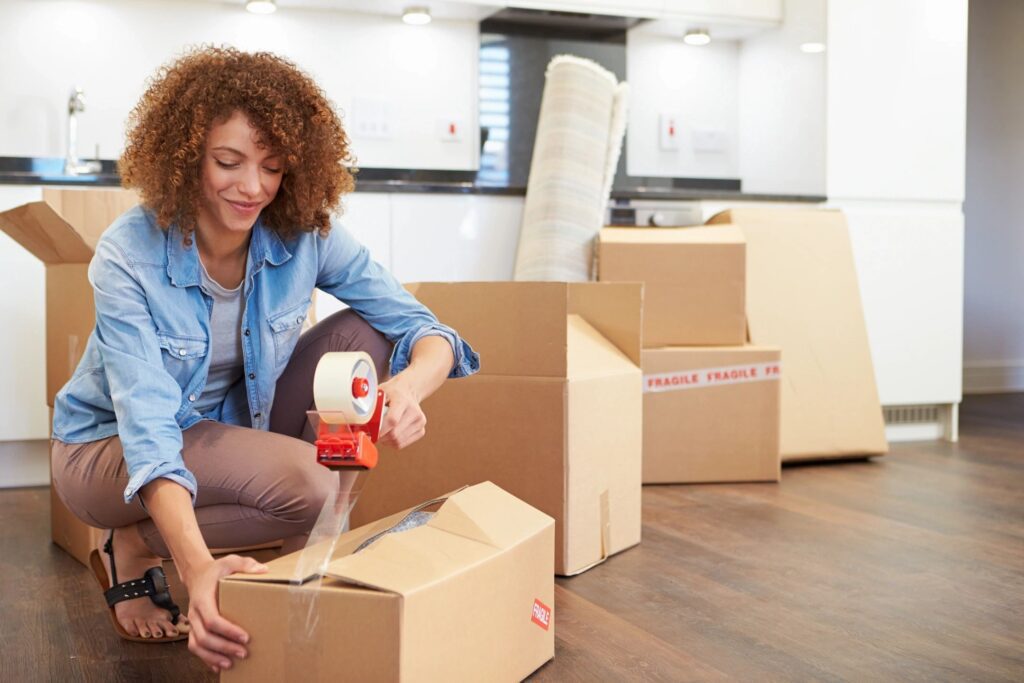Tips on Packing For A Move

6 Tips on Packing For A Move
Are you looking for tips on packing for a move? Packing for an out-of-state move can be overwhelming! Although you can save a lot of money, it can often be a difficult task. With that in mind, here are some useful packing tips and checklists to help you do it yourself, in a way that makes it easier to unpack and quickly get organized in your new home.
#1: Preparing
We recommend investing in the materials that the pros use, such as:
- Quality/strong moving boxes in a variety of different sizes
- 2” packing tape
- Butcher paper
- Permanent markers
- Scissors
- Masking tape
- Tissue paper
- A utility knife
Once you have those supplies assembled, it’s time for the next phase: Packing on schedule!
#2: Don't Rush Your Move
Loading a U-Haul or Rental truck can be an overwhelming task. One that many people underestimate. We recommend packing over time and having all your items fully packed by the day you receive your moving truck. Use these tips to get it all done on time:
- Get organized! Use a calendar to plan what to pack and when. Many people underestimate just how long it might take.
- Begin with items in storage areas such as the basement or attic
- Next, pack out of seasonal items for the season you are not in. For example, if it is summer, pack your winter gear/clothes.
- Pack room by room to get and stay organized.
- Designate a work area in each room to help you stay organized.
- Sort packed boxes by room and by weight to make loading the truck easier.
- Boxes should weigh no more than 40 lbs. Hurting oneself during a move takes a difficult task and makes it an overwhelming one.
- Leave out the essential items you will need in the morning and during your move.
#3: Choosing the Right Moving Supplies
We mentioned the importance of using the proper moving supplies and packing materials even in a DIY move because the supplies you choose can help you keep your belongings safer and better organized. Some packing boxes and cartons you may need, include:
- Wardrobe cartons: These make it easy to transport your clothes even have a built-in bar for the hangers.
- Mirror cartons: The two boxes join seamlessly to fit larger frames
- Mattress cartons: Boxes for crib size to king-size mattresses
- Double-wall cartons that offer extra protection for breakable items like fine china, pottery, and crystal
- Small cartons: ideal for heavier but small items such as books and DVDs
- Medium cartons: A good carton for toys, pots, and pans, and smaller appliances
- Large cartons: Great for bulky but lightweight items like towels, pillows, and linens
- Extra-large cartons: Useful for bulky or awkward items such as lampshades
- Stretch wrap: This can be used to wrap furniture and keep it safe from other items
#4: Labeling
- Label every carton in detail. Buy a multi-pack of Sharpies, and mark each box with the room location, general contents, and whether the box may be fragile.
- Us “This Side Up” when applicable, and with breakables.
- To make your unpack go smoother, you might want to label boxes with a number code such as 1A, 1B, 1C, etc to imply which should be unpacked first at your new home.
#5: What Not To Pack
Just because you own it, doesn’t mean you should move it! Hazardous materials can endanger both yourself and your belongings. Items you should not pack include:
- Flammable liquids or solids
- Compressed gases
- Lighter fluid
- Gasoline
- Oxygen bottles
- Propane cylinders
- Paints and paint thinners
- Fireworks Nail polish remover
- Matches
- Automotive repair and maintenance chemicals
#6: Best Practices
- Pack boxes in layers, with a sheet of cardboard or some crushed paper in between.
- Place screws and other hardware in small plastic bags and tie them together
- Be smart about your packing, don’t pack your breakables with a cast-iron frying pan
- Keep pairs of items and similar items together.
- Towels and blankets can be used for padding and cushioning.
- For very fragile items, pack them in individual small boxes, then pack those boxes in a larger box with plenty of padding.
- A box is perfectly packed when you can tape it securely closed with the cover perfectly flat.
- Wind electrical cords and cables so they don’t dangle and catch on things.
- Seal each carton tightly with tape.